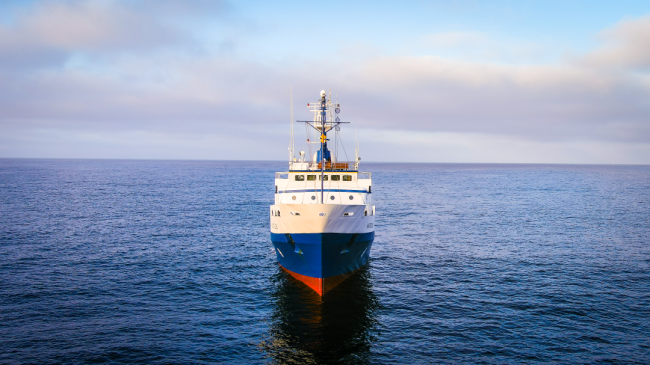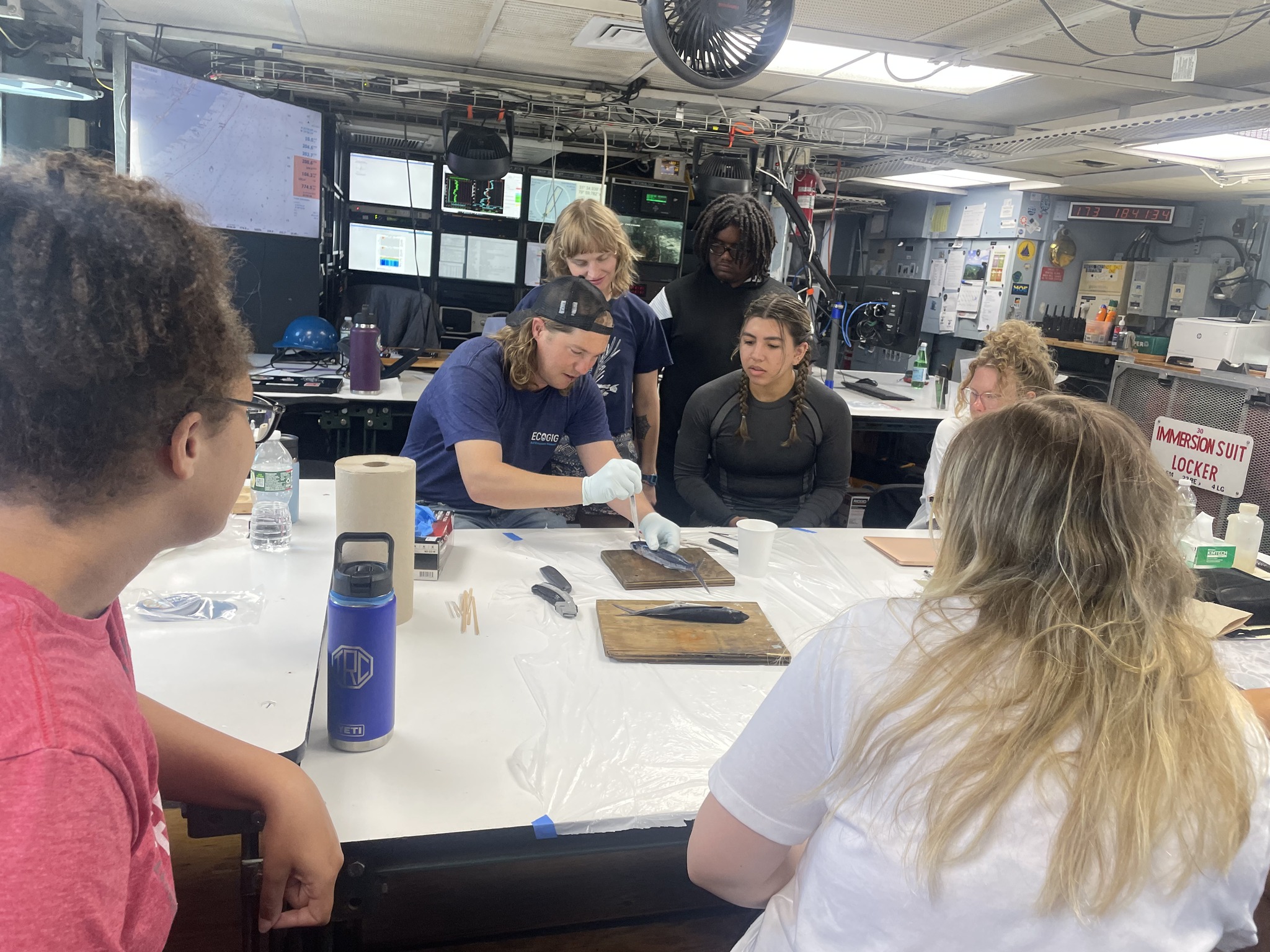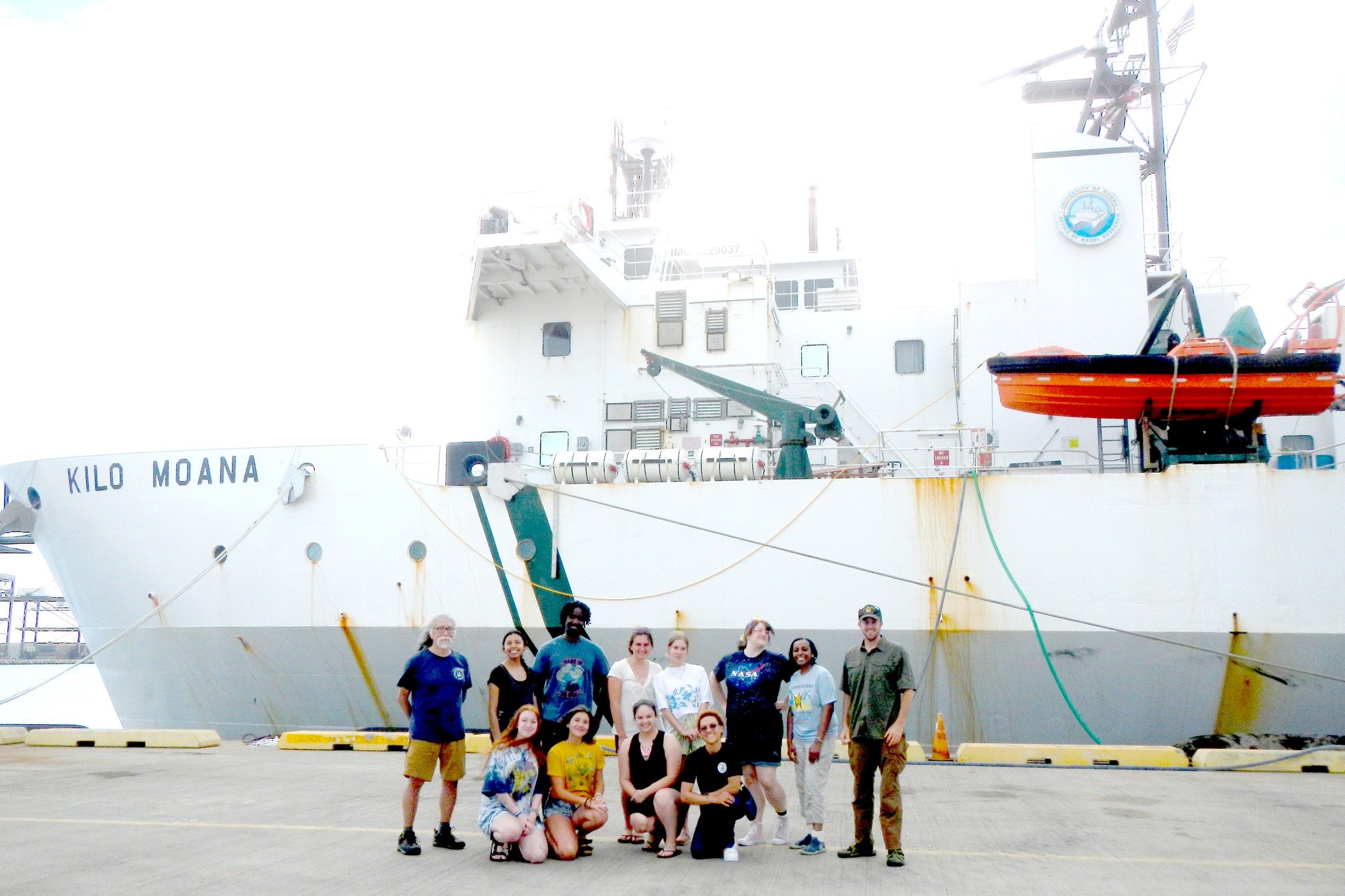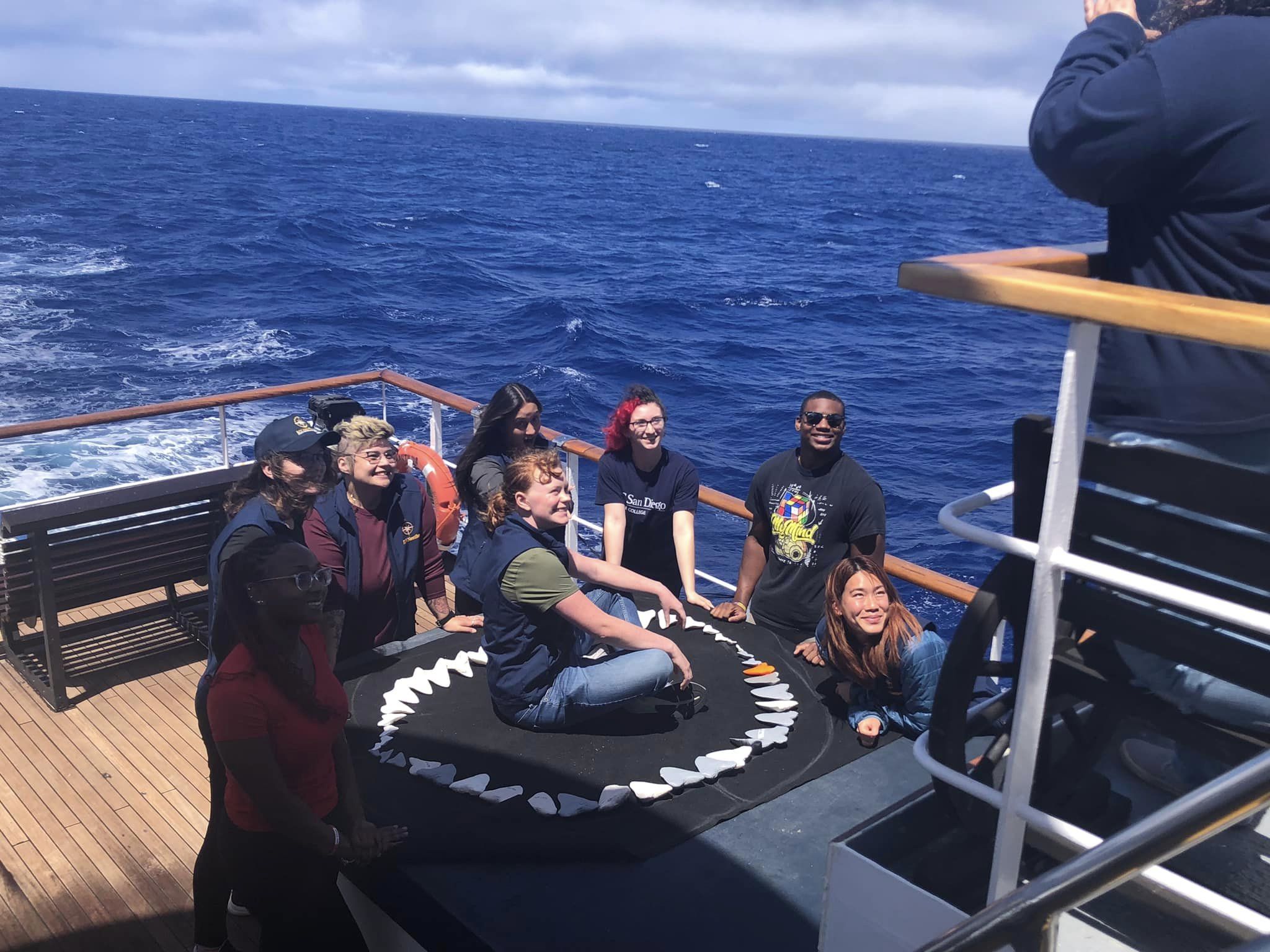You have /5 articles left.
Sign up for a free account or log in.

The E/V Nautilus is the newest vessel to partner with STEMSEAS to offer a weeklong career exploration voyage for students interested in STEM careers.
E/V Nautilus
Many individuals stumble into their career passions by accident. Sharon Cooper found hers on a boat.
As an early-career professional, Cooper went on an expedition for educators on research vessel JOIDES Resolution just for the adventure, “and it blew my mind,” she says.
“I had no idea that all these kinds of research and this whole operation was going on,” Cooper says.
After her expedition, Cooper started working for the JOIDES Resolution, changing her career trajectory and inspiring her to think differently about the work she does.
To give others the same opportunity, Cooper and two colleagues applied for National Science Foundation grant funding to utilize publicly funded vessels to provide career exploration and experiential learning opportunities to undergraduates across the U.S.
The result was STEMSEAS, a collaboration with Indiana University of Pennsylvania, Lamont-Doherty Earth Observatory at Columbia University and the University National Oceanographic Laboratory System (UNOLS) that’s been running since 2016, giving over 200 students confidence in their career choices and hopefully the experience of a lifetime. Cooper serves as the program organizer and is the educational outreach officer at Columbia Climate School Lamont-Doherty Earth Observatory.
The world below: The crux of STEMSEAS’ operations is that the program uses vessels traveling in between sites for scientific expeditions.
“Taxpayers—you, everybody—we all pay for the U.S. academic research fleet, which is about 18 ships that are operated by different U.S. universities,” Cooper explains. “When they move from port to port in between expeditions, a lot of that capacity in the past was underutilized.”
Instead of moving vacant ships, STEMSEAS fills them with a gaggle of students ready to learn from a pair or trio of geoscientists or oceanographers, who provide specialized curriculum for a week at sea.
The program also promotes access for students who may not otherwise be able to participate in experiential learning. Voyages last between six and 10 days, so students who are employed or interning during the academic year can often participate, and the program is even free to participants.
STEMSEAS is funded by a grant of around $850,000, which covers student expenses, payment for onboard faculty members and graduate teaching assistants, and other associated costs.
Charting course: Each fall, UNOLS publishes the vessel schedule for the upcoming calendar year, and from there Cooper can identify gaps in between expeditions when the boats will be unoccupied.
Cooper then reaches out to the ship operators to see if the voyage would be a good opportunity for STEMSEAS. More recently, operators have begun to reach out to her and alert her of transport gaps in their schedule that they believe would fit the program.
After establishing five or six slots, Cooper and her team match scientists and graduate students to the different voyages and finalize the schedule for the upcoming year. Trips take place primarily in the summer, when students have the most availability in their schedule, but may run any time between April and November.

Students aborad the R/V Endeavor learn to dissect two flying fish on their voyage in June 2023.
STEMSEAS
Earning their sea legs: The ideal STEMSEAS participant falls into one of two categories, Cooper explains.
One is the undecided major, typically a first- or second-year student, who wants to identify a passion and explore a career in STEM. The other is an upper-level STEM student looking at graduate school, hoping to identify their future field of study. Both are welcome to apply and encouraged to come aboard.
STEMSEAS is also interested in providing diverse students or underrepresented minority students with the opportunity to learn more about working in STEM, whether that’s first-generation learners or students from minority-serving institutions or HBCUs.
Students complete an application online to join a STEMSEAS cohort and indicate which expedition they’d like to join. Staff evaluate the applications and select finalists, who then complete a quick Zoom interview with a staff member to assess their communication and interpersonal skills (being stuck on a boat with a dozen strangers isn’t for everyone). The selected participants are grouped into cohorts for the expeditions and notified early in the year.
When creating cohorts, STEMSEAS leaders try to ensure diversity in grade and home institution, Cooper says.

Students aboard the R/V Kilo Moana will sail from Honolulu to Alaska in just over a week.
STEMSEAS
On the sea: Before stepping on the boat, students participate in webinars with their cohort and faculty teams to prepare for their journeys. To get them to sea, STEMSEAS covers flights, hotels and transportation to ports.
STEMSEAS mostly uses larger boats in UNOLS’s fleet, as the program hosts between eight to 12 students per trip and faculty and graduate students.
Current STEMSEAS voyages underway include R/V Kilo Moana—traveling from Honolulu to Seward, Alaska—and RV Endeavor, traveling from Narragansett, Mass., to St. Petersburg, Fla. This year, STEMSEAS had its first private partnership with Ocean Exploration Trust using E/V Nautilus, sailing from Honolulu to British Columbia.
During the journey, students participate in hands-on activities, engaging with geoscience content, lab exercises, data collection and analysis, and they have chances for career exploration and discussion and reflection activities. STEMSEAS is not a credit-based program, so students don’t receive grades.
Rather than assigning a standardized curriculum across expeditions, faculty members create and implement their own courses based on their specializations.

Students on the E/V Nautilus recreated a Megalodon jaw on their voyage as part of the curriculum.
STEMSEAS
“It might be paleo-oceanography, biological oceanography, physical oceanography. We’ve had people from USGS [U.S. Geological Survey] on board, all different kinds of things so that they can share what they do,” Cooper says.
After the experience, students complete a postexpedition project, which they then present to their home college or university. Learners also write a short article about their time with STEMSEAS and join their cohort members in webinars.
Sailing away: STEMSEAS participants complete pre- and postsurveys and, over all, the greatest impact on participants has so far been increased confidence.
“A lot of students say they were a little bit interested in these areas, but a lot of the people around them—like their family and friends and community, whatever—aren’t familiar with these kinds of [careers], and so they would be a little bit unsure, but then they come to our program and they meet all these other students who are interested, the scientists, the crew—everybody who’s interested [in STEM]—and that really solidifies their direction,” Cooper explains.
Students are also more aware of the jobs available to them in STEM and grow their professional network in the field. Many scientists become mentors or provide letters of recommendations to learners after the expeditions conclude.
The success of STEMSEAS has hinged on relationships: relationships with ship operators, with scientists, with colleges and universities who promote the program, and with program alumni, who continue to spread the word.
If your student success program has a unique feature or twist, we’d like to know about it. Click here to submit.




